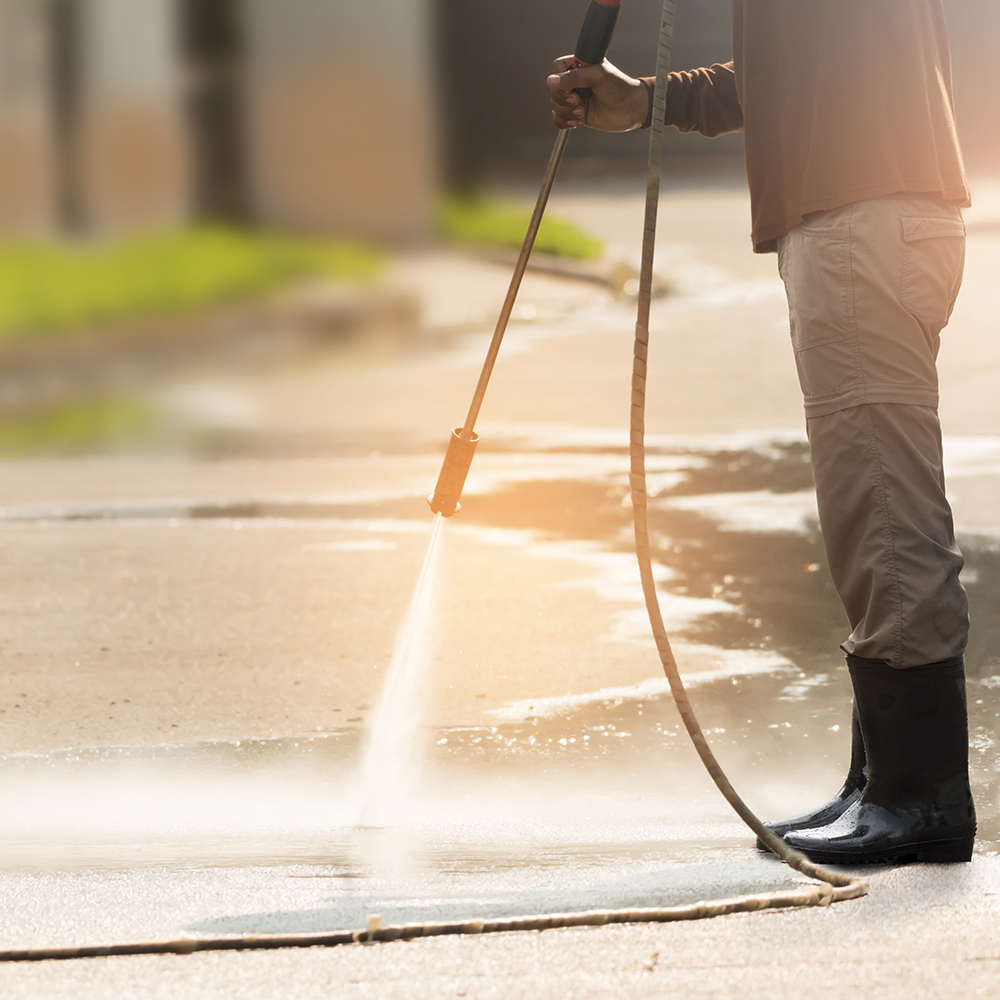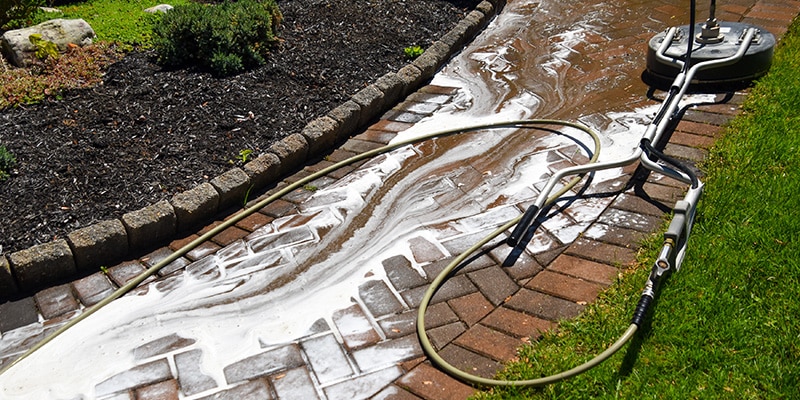Pressure Washing Driveways: A Step-by-Step Guide to Achieve a Pristine Look
Attaining an immaculate driveway can significantly improve the visual appeal of your building, and pressure cleaning is a very effective method to achieve this. This overview breaks down the process into workable steps, beginning with celebration important materials, such as a high-powered pressure washer, ideal detergents, and necessary safety gear. Correct configuration of the pressure washer, selecting the ideal nozzle, and mastering efficient cleansing techniques are just as essential.
Gathering Your Materials
Before you start pressure cleaning your driveway, it's crucial to gather all necessary products to ensure the job is done successfully and effectively. The key device called for is a stress washer, ideally one with a minimum pressure ranking of 3000 PSI to appropriately remove persistent spots and debris. Make certain the pressure washer is in excellent working condition and furnished with ideal nozzles, such as a 25-degree nozzle for general cleaning and a 0-degree nozzle for targeted, persistent places.
In enhancement to the pressure washer, you will require a top quality cleaning agent formulated for concrete surfaces. A stiff-bristled brush or broom can aid in rubbing the cleaning agent into the surface before washing.
Tube expansions and surface area cleaner attachments can enhance the cleaning procedure, making it more comprehensive and effective. Guarantee you have sufficient water supply and a clear drain course to manage the drainage. By constructing these materials, you set the phase for a successful and comprehensive driveway cleansing.
Preparing the Driveway
With all the required materials gathered, focus must now be guided towards preparing the driveway for pressure washing. This preliminary action is essential to make certain a reliable and reliable cleansing process. Begin by removing the driveway of any kind of vehicles, furnishings, or various other obstacles that might impede the pressure cleaning process. It is important to have a clear workspace to stay clear of any kind of possible damages or crashes.
Next, completely move the driveway to remove loose dust, leaves, and particles. This initial cleaning helps protect against the pressure washer from scattering particles, which could potentially trigger damage to nearby residential or commercial property or harm individuals. Pay special focus to sides and edges where dust has a tendency to gather.
Examine the driveway for any visible discolorations, oil spots, or mold growth. Pre-treating these bothersome areas with an ideal cleaning remedy will enhance the performance of the pressure cleaning. Apply the cleaner according to the maker's guidelines and allow it to rest for the recommended duration to break down tough spots.

Establishing the Pressure Washer
Making certain the pressure washing machine is properly established is critical to keeping and attaining optimal results safety during the cleaning process. Begin by thoroughly inspecting the devices. Examine for any type of visible damage or wear and make certain that all parts, including tubes and nozzles, remain in excellent condition. Link the pressure washer to an appropriate water resource, making sure the hose pipe is safely affixed to prevent leakages.
Following, affix the high-pressure tube to the spray and the device gun, tightening up all links to avoid any kind of possible water or pressure leaks. Select the ideal nozzle for your driveway, normally a 40-degree or 25-degree nozzle, to stabilize cleansing power with surface area defense. Protect the nozzle to the spray gun, verifying it is securely in position.
Before beginning the machine, validate that the gas and oil levels are adequate if it is a gas-powered system or that the electric links are safe and dry for electrical designs. Turn on the water and squeeze the spray gun trigger to launch any type of air from the system. Finally, start the pressure washer according to the maker's instructions, guaranteeing you comply with all safety guidelines. Your tools is currently all set for efficient and reliable driveway cleansing.
Learning Cleaning Strategies
Understanding effective cleaning methods is essential for click this site accomplishing an immaculate driveway without triggering damage to the surface. The initial action is to figure out the right pressure setting for your specific driveway material. Concrete and asphalt can usually withstand higher pressures, whereas even more fragile surface areas like block or pavers might call for lower pressure to stop damaging or disintegration.
Begin by holding the pressure washing machine nozzle about 12 to 18 inches from the surface to avoid focused impact that can cause damage. Utilize a sweeping movement to make certain also cleansing, relocating the nozzle side to side in overlapping strokes. This technique aids to stay clear of streaks and makes certain detailed dust and grime removal.
For stubborn discolorations, such as oil or oil, pre-treat the area with a suitable detergent. Permit the detergent to rest for a couple of minutes to break down the pollutants prior to using the pressure washer. Employ a rotating nozzle for these tougher places, as it combines high pressure with a rotating activity to dislodge deep-rooted dust efficiently.
Post-Cleaning Upkeep
Post-cleaning maintenance is important to extend the cleanliness and integrity of your driveway. Ensuring your driveway remains in beautiful problem calls for a few strategic steps. First, applying a high-grade sealant can significantly extend the life expectancy of the clean surface. Sealants act as a protective barrier versus spots, oil spills, and the rough effects of climate, reducing the need for constant cleansings.

Furthermore, resolving any fractures or damages in the driveway surface area is important. Little splits can expand over time, leading to even more substantial architectural problems. A driveway repair service set can successfully handle minor repairs, ensuring the surface continues to be undamaged and smooth. By executing these post-cleaning maintenance techniques, property owners can maintain their driveways looking properly read this maintained and tidy for several years to come.
Final Thought

Attaining an excellent driveway can substantially enhance the visual appeal of your residential or commercial property, and next pressure washing is a very reliable approach to accomplish this - power washing kansas city.Before you start pressure washing your driveway, it's critical to gather all needed products to make certain the job is done effectively and effectively. The key device required is a stress washer, preferably one with a minimal pressure rating of 3000 PSI to effectively get rid of stubborn stains and debris. Concrete and asphalt can commonly withstand higher pressures, whereas even more fragile surface areas like brick or pavers might call for reduced pressure to prevent chipping or disintegration
Achieving a pristine driveway through pressure cleaning includes careful prep work, correct equipment choice, and reliable cleaning strategies.